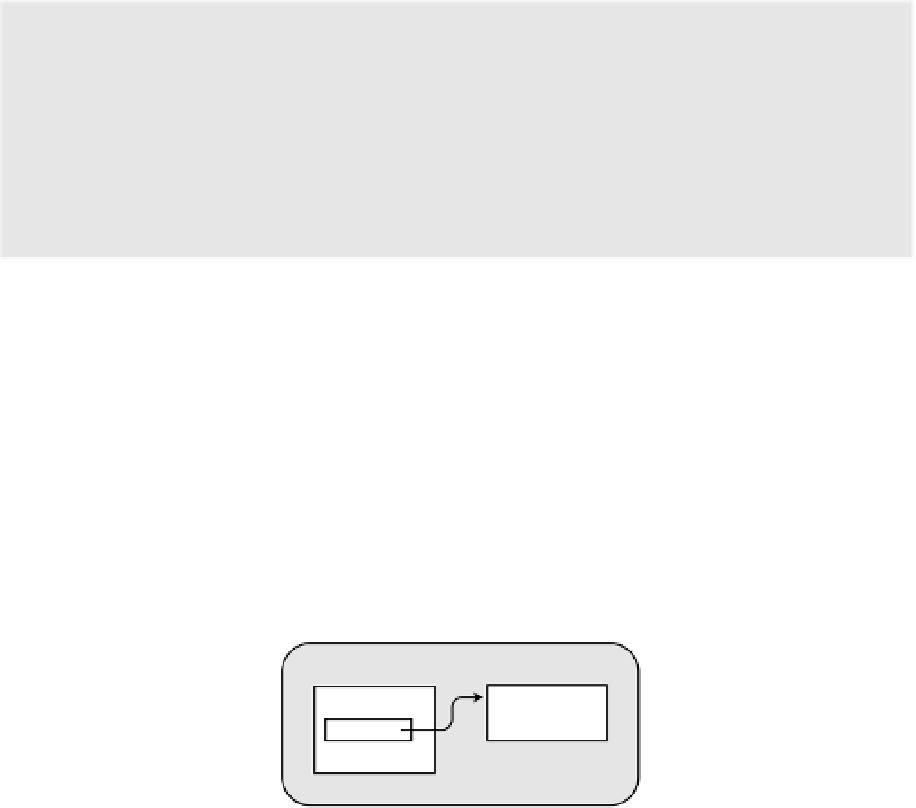Information Technology Reference
In-Depth Information
Nested Types
Types are usually declared directly inside a namespace. You can, however, also declare types
inside a class or struct declaration.
Types declared inside another type declaration are called
nested types
. Like all type dec-
larations, nested types are templates for an instance of the type.
A nested type is declared like a member of the
enclosing type
.
-
A nested type can be any type.
-
An enclosing type can be either a class or a struct.
For example, the following code shows class
MyClass
, with a nested class called
MyCounter
.
class MyClass // Enclosing class
{
class MyCounter // Nested class
{
...
}
...
}
Declaring a type as a nested type often makes sense if it is only meant to be used as a helper
for the enclosing type.
Don't be confused by the term
nested
. Nested refers to the location of the
declaration
—not
the location of any
instances
. Although a nested type's declaration is inside the enclosing type's
declaration, objects of the nested type are not necessarily enclosed in objects of the enclosing
type. Objects of the nested type—if any are created at all—are located wherever they would
have been located had they not been declared inside another type.
For example, Figure 23-7 shows objects of types
MyClass
and
MyCounter
, as outlined in the
preceding code. The figure additionally shows a field called
Counter
, in class
MyClass
, that is a
reference to an object of the nested class, which is located elsewhere in the heap.
Figure 23-7.
Nesting refers to the location of the declaration, not the location of the object.




















































































